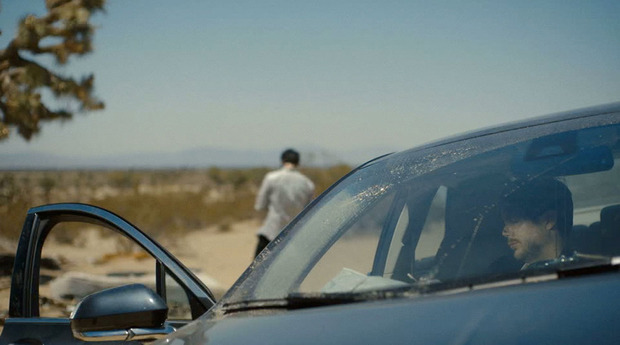Take What You Can’t Get
The history of the ’70s heist genre and a re-imagining of “The Incident”

Sponsored content:
by Chris Diken of Vimeo
In conjunction with Vanity Fair and Film Independent, The Lincoln Motor Company tapped filmmaking duo David Ariniello and Nick Citton to re-imagine the classic ’70s heist genre. “The Incident” is the story of two friends on the run after a bank robbery—and they just might get away with it. Along with the film, here is a historical exploration of the heist film genre.

We all want something, and what makes heist films entertaining are the lengths the heist-er goes to in order to obtain their object of desire. From coming out of criminal retirement, to getting the gang back together, to creating an elaborate ruse with approximately zero chance of success, no plan is too ridiculously intricate for a heist film.
Perhaps because of the universality of desire, heist films have been a persistent presence throughout the history of cinema. A film about a certain train robbery started it all—not just for the heist genre, but for moviemaking in general—with innovative techniques such as cross-cuts and moving camerawork. The picture nailed two points of the classic three-act heist plot: The heist itself, and its unraveling. We don’t see the robbers planning; rather the film begins late in the action, with the heist in progress.

With soldiers, families and everyday citizens giving up much for the war effort, a mood of deprivation settled over America during the Depression and post-Depression eras, so more people felt entitled to take what they wanted. One kind of heist was the romantic thriller that showed a criminal who gives up his game for love. The thief simply must get what he wants, even if it’s different than what he originally wanted. Others combined heist elements with Western and noir. More than one heist showed a criminal who gathers a group of misfits to knock over a casino—or five casinos—in one day.

The 1950s brought dark and brooding French heists, which depict more “perfect” squads of criminals who can’t get the job done without falling prey to human nature. The only one seemingly immune to human nature is the ultra-cool heist mastermind.
We should pause here to examine coolness as an integral component to heist films. Movies of this type often revolve around a suave individual because first, you need unshakable confidence to attempt a heist and second, only such a self-assured character could convince so many people, from fellow criminals to un-cool victims, to follow their lead. This coolness was pervasive in 1960s and ‘70s cinema, with bikers, bank robbers and killers running amok.

The harsh realism of the early 1970s gave way to classic capers. A caper is a heist with comic elements, which can be quite easy to realize considering the absurd plotlines and sheer number of things that can go wrong.
The ’90s were rife with heist films that traded heavily in black comedy, many made by American and British directors, about groups of hyperbolically cool criminals. Often, we never even see the heist—only its violent aftermath. So really, it doesn’t matter what we want, only that we will suffer for wanting it.

For every sleek heist film, there’s a shambling heist parody about wannabes who can’t get out of their own way during a series of low-stakes robberies. It turns out that the heist structure is a handy framework on which to hang nerdy jokes and stylish camerawork.
Whether or not their thieves are successful, many heist movies seem to suggest that there are serious consequences for wanting something. So we should do our best to avoid wanting anything, but that would be to avoid human nature. And then there’s that advice on how to write a great story: Every character should want something, even if it is only a glass of water.
Go behind the scenes of “The Incident” and read more about Nick Citton and David Ariniello at Hello, Again. And watch the re-imagining at The Lincoln’s website.
Images courtesy of Lincoln Motor Company












